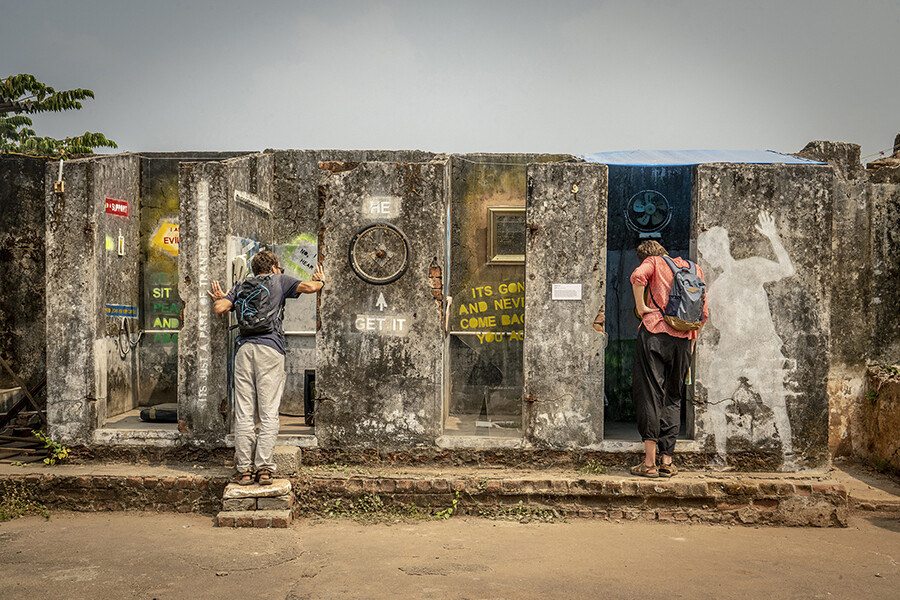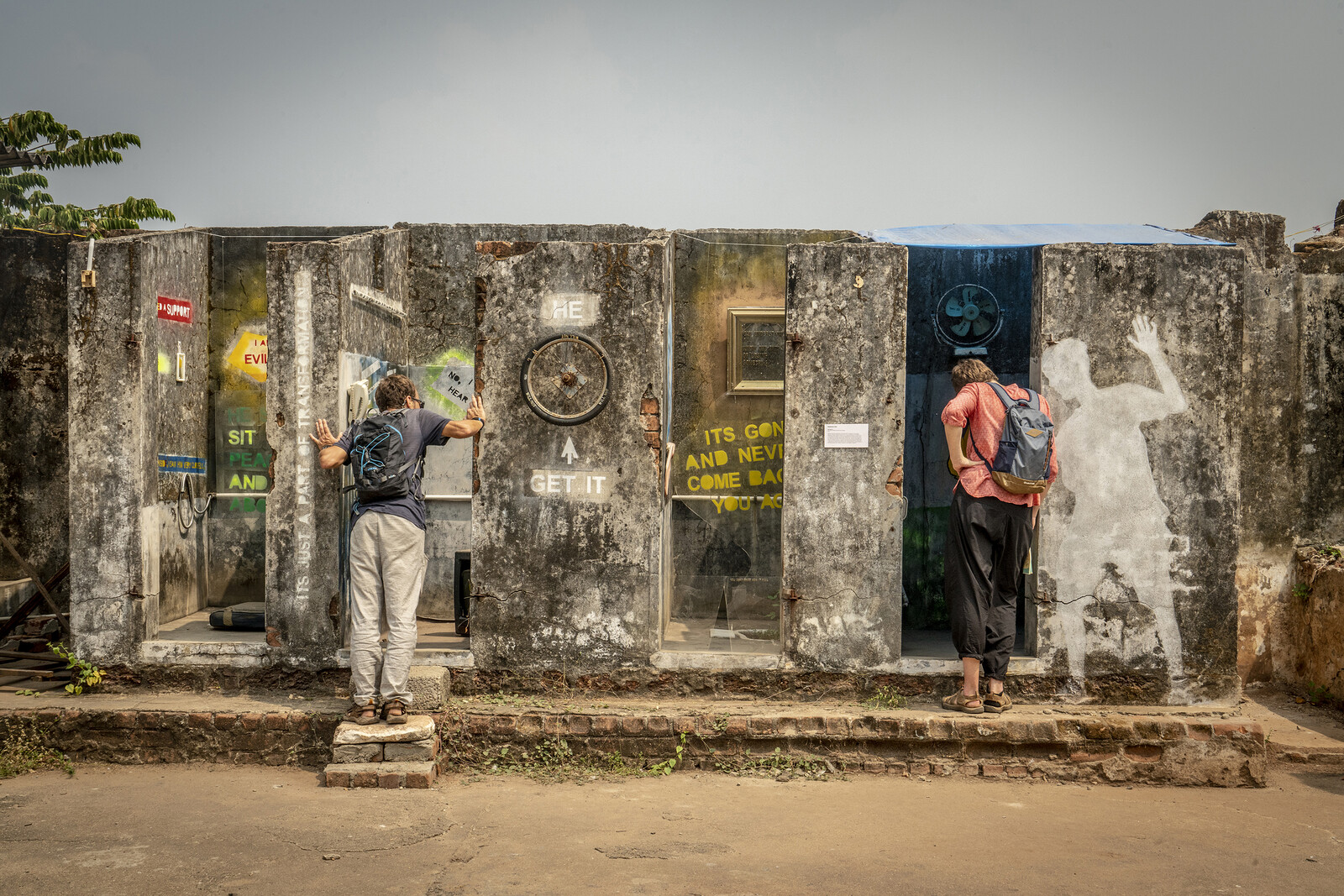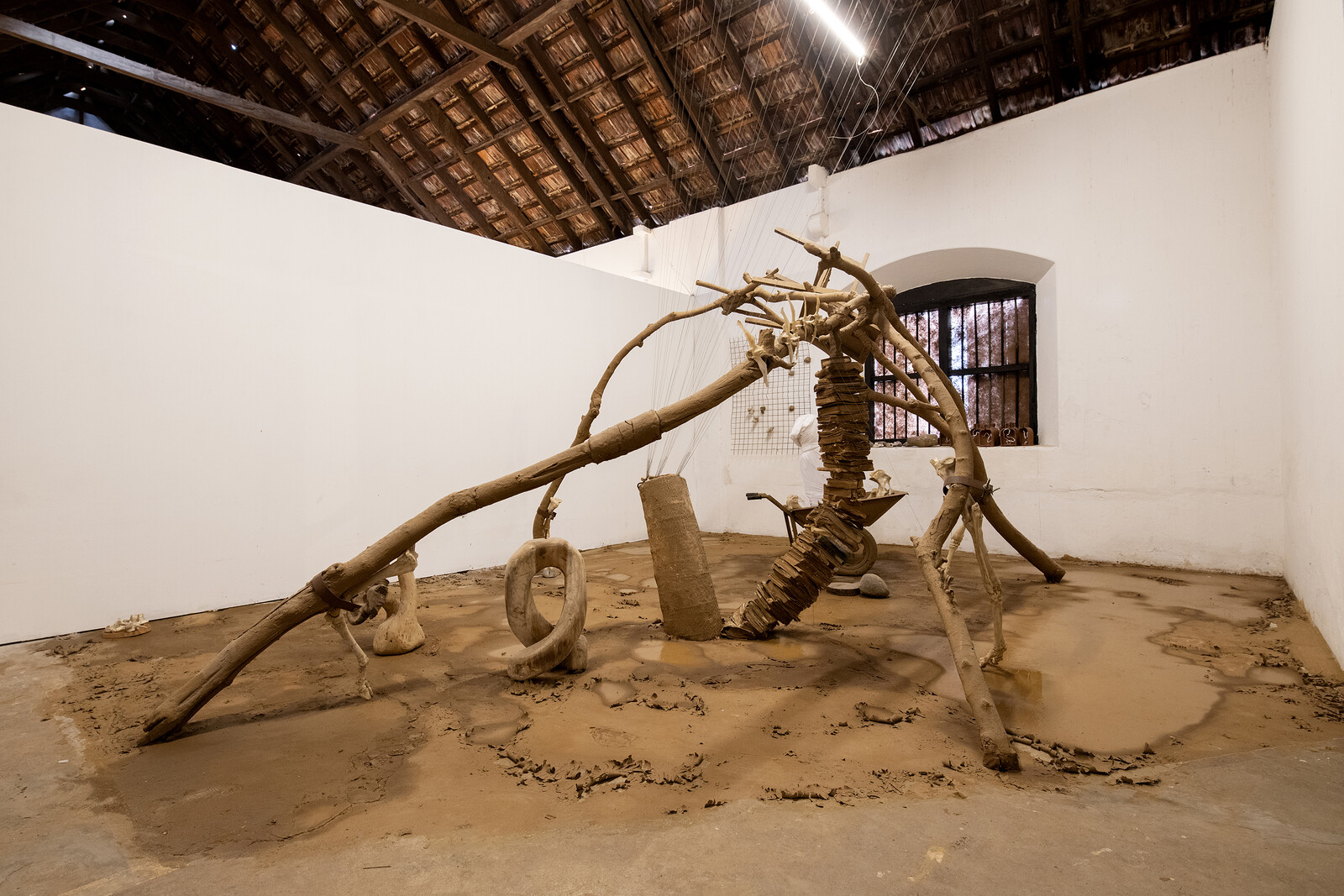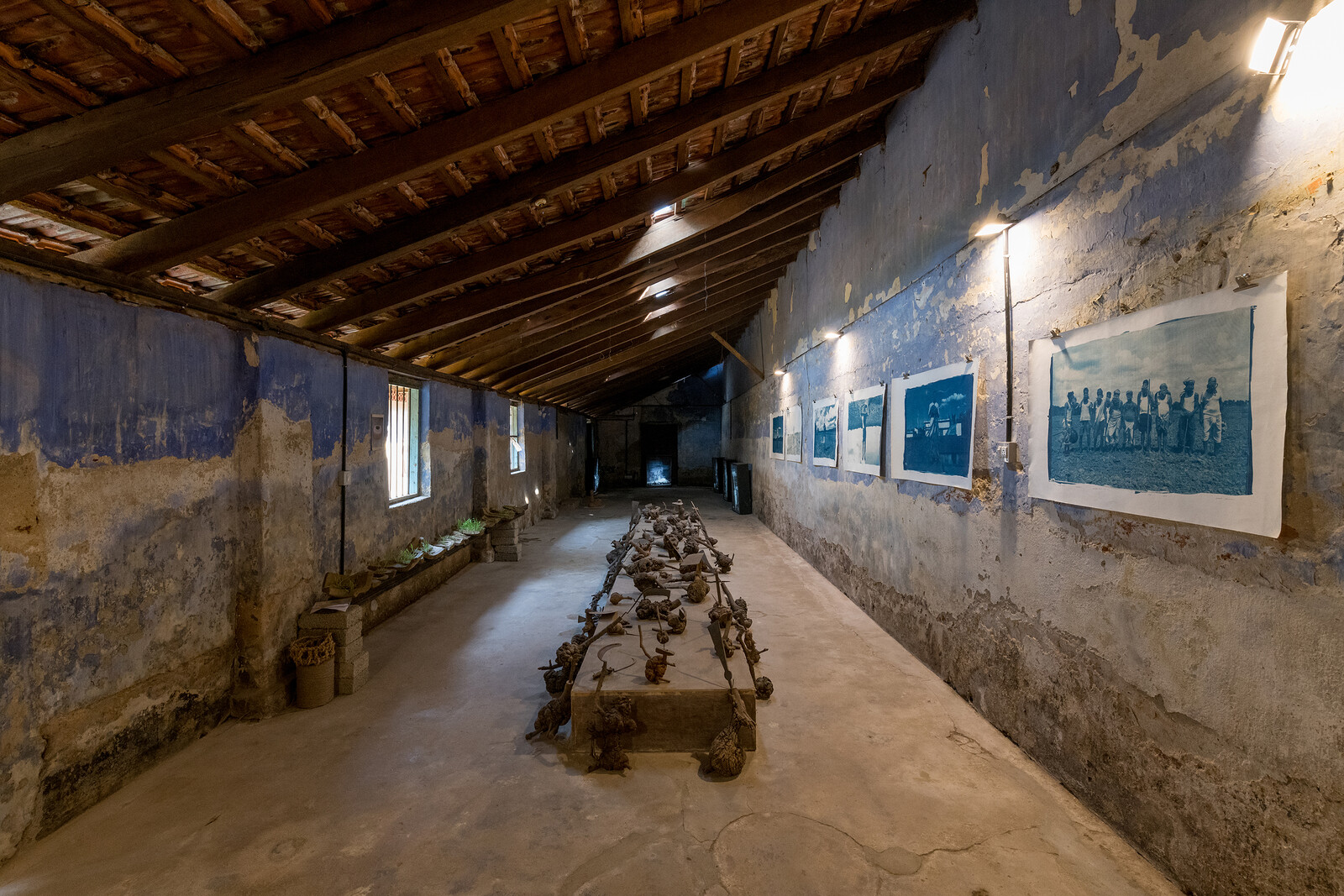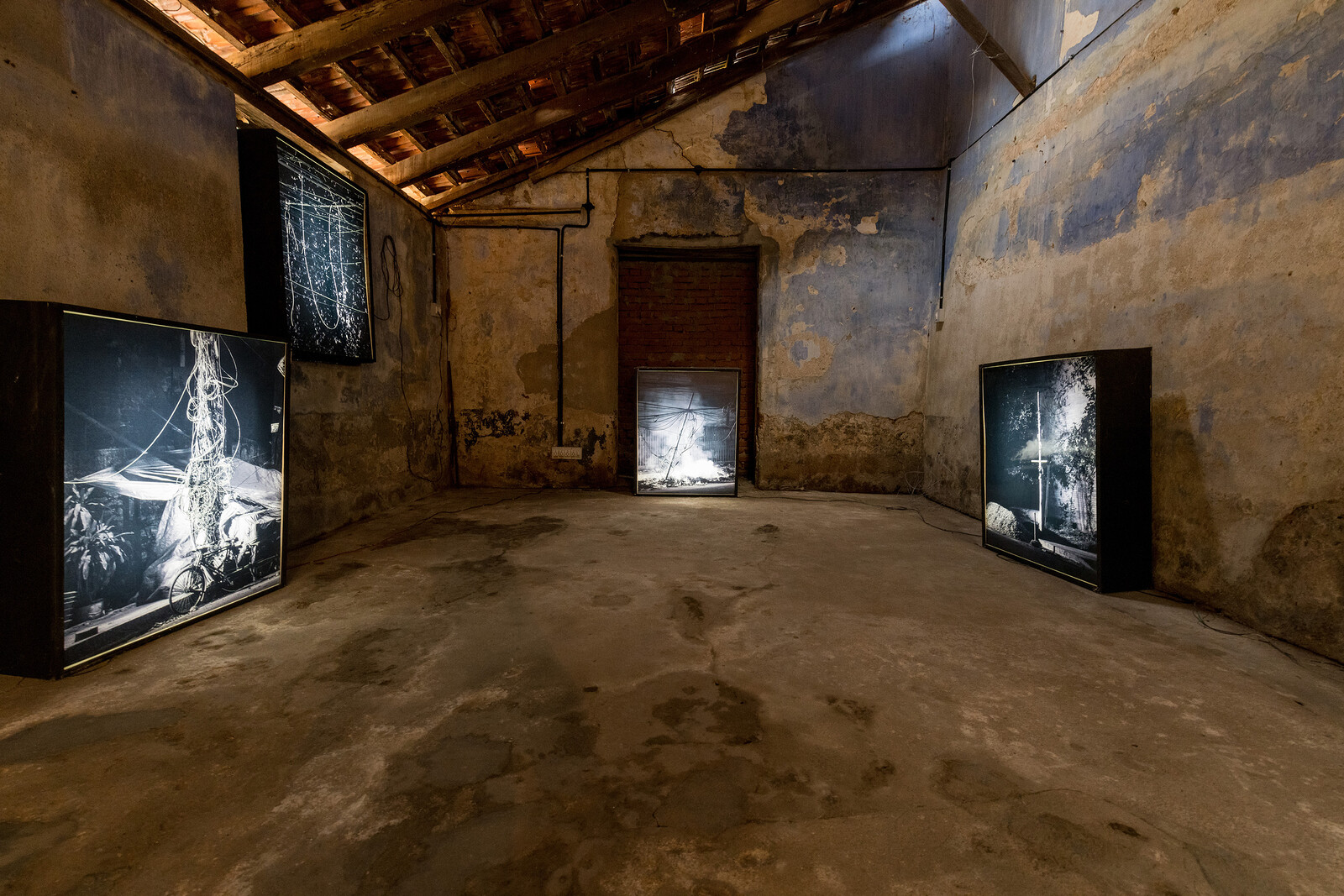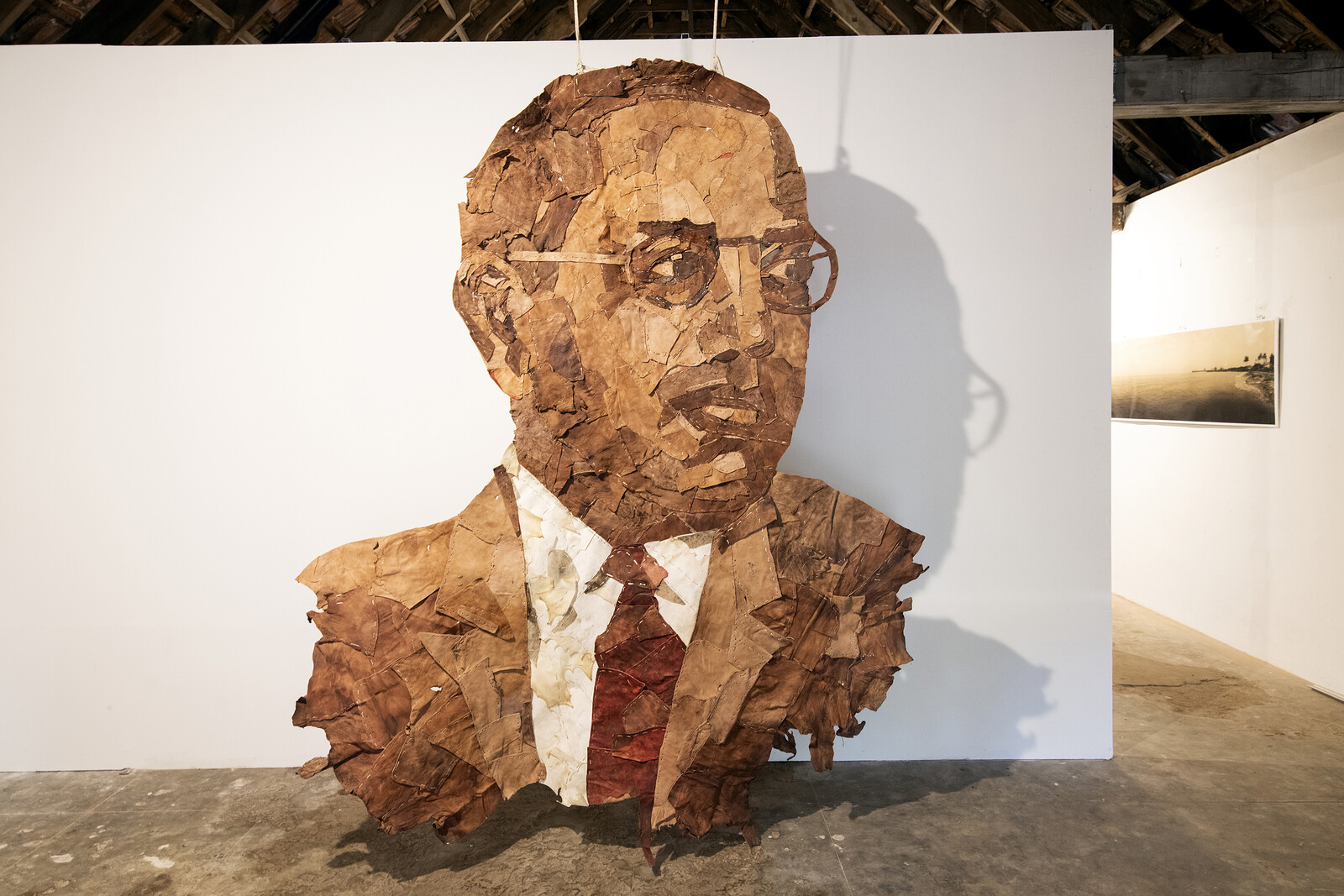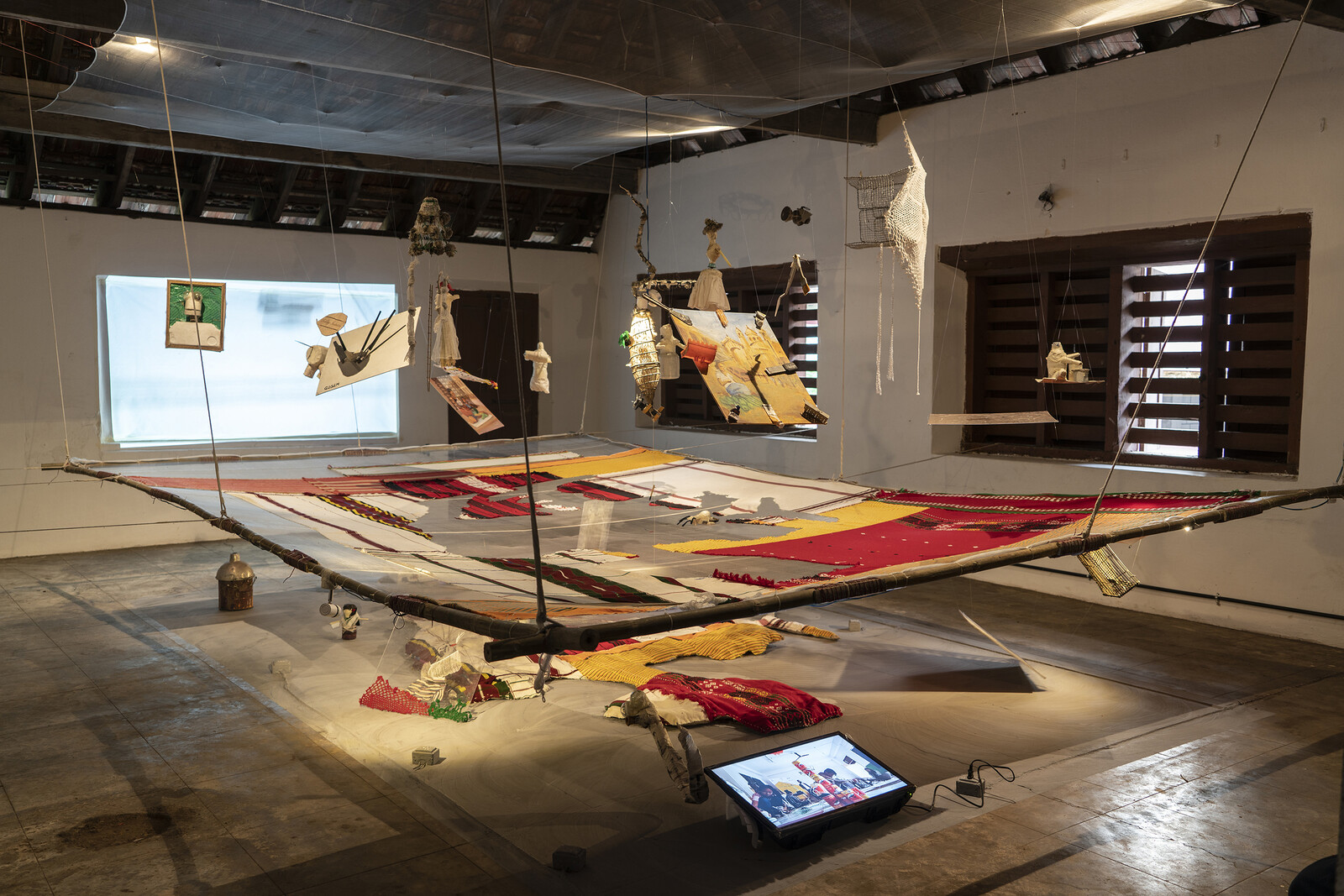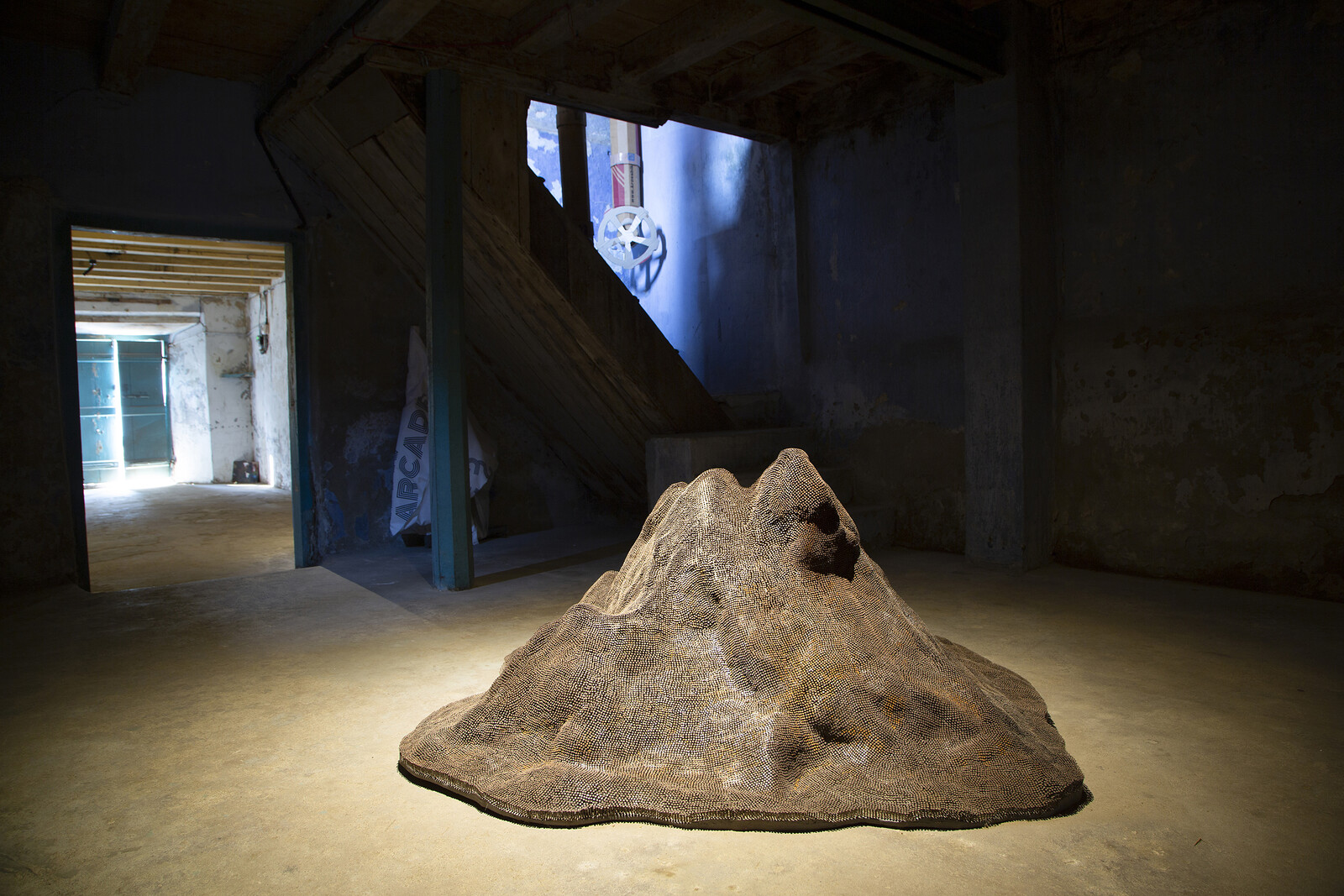http://kochimuzirisbiennale.org/students-biennale/
Facebook / Twitter / Instagram
In the last two decades, the proliferation of scholarship on crises in and of postcolonial art history has destabilized the Western art history canon by addressing the origins, contexts, approaches, and historical frameworks of art in different parts of the world. Though these seminal contributions from scholars such as Griselda Pollock, Geeta Kapur, Nicholas Mirzoeff, Donald Preziosi, and Hal Foster, to name only some, have been influential in encouraging a radical departure from how art has been exhibited and written about, a blind spot remains: how art is taught in colleges and universities of the postcolonial world. Art education in countries without a robust cultural infrastructure is often constrained by the negligence and incompetence of public art institutions, especially in the arts administration sector, and the noticeable absence of exhibition histories in art curricula. Addressing these concerns locally is of utmost importance to reassessing many of the foundational notions or assumptions of what art education can be and do. At the same time, paradigm shifts in the way cultural production is performed and experienced and the rigorous demands for professionalization in a globalized digital culture lends these concerns a certain urgency. How can art education in an environment like India move forward without leaving some community members behind and replicating structural inequalities? Is there an inclusive pedagogical system capable of adapting to these cultural shifts and reflecting upon the issues they entail?
Bachelor’s and master’s fine art programs in India have begun in the last decade to cater primarily to the demands of a new generation of students interested in gaining exposure to contemporary theory and new ways of making and exhibiting art in the professionalized art field. The well-established art schools and departments at Maharaja Sayajirao University, Baroda, and Jamia Millia Islamia, Delhi, and the more recently founded and promising ones at Ambedkar University Delhi and Shiv Nadar University, Dadri, which offer different pedagogic approaches than their more traditional counterparts, provide essential instruction in contemporary art practices. These institutions organize annual exhibitions that serve as a stepping stone for many students to enter the gallery or mainstream art system. However, most schools do not consider the importance of exhibition practices in the study of art. As such, annual student presentations lack a self-reflexive understanding about their own history and function as mere exercises of spectacle without much critical or meaningful interrogation. Writer and educator Ashfaque Husain recognized the relevance of organizing exhibitions of art students’ work at various levels in his Seminar on Art Education in 1956:
With regards to professional education, there appeared to be room for more art schools, and for a reorganization of the existing schools. Various ancillary steps also seemed to be called for. For instance, we can do with many more exhibitions of students’ work at the school, state, and all-India levels. Let me, however, make it very clear that I am not referring to exhibitions of children’s art, which seem to have become a fashion and which seem to me to be doing more harm than good, insofar as they encourage a tendency to exhibitionism and a professional spirit among the immature. I am referring here to the need for bona fide and properly organized exhibitions of the works of students of professional school of arts. They should be so organized as to provide encouragement and instruction to the students and also aesthetic education for the others. 1
Where are we then in 2019? If student exhibitions are to be instrumentalized for “aesthetic education,” then we must critically examine their history, the institutional, social, and economic networks they comprise, and their contributions to the expanded field of contemporary art. Exhibitions are, after all, the sites where theory and practice meet. Does exhibition practice enable experimentation, reflection, and negotiations? How might it manifest the inherent tensions of art education? These are not easy questions to answer. Art education in India is an uneven field, and many art schools still follow a conservative syllabus devised in the colonial era. The disparity in quality of art education among Indian art schools is exacerbated by many students’ lack of exposure to the contemporary art networks and discourses in metropolises like Mumbai and Delhi. How might these disparities and tensions unravel when drawn together? Could an exhibition map the eclecticism of the contemporary?
The latest edition of the Students’ Biennale organized by the Kochi-Muziris Biennale (KMB) offered an important case study. To quote the exhibition’s curators, “Making as Thinking” was conceptualized as a “meeting ground to share ideas and experiences to catalyze conversations about contemporary art practices and foreground the work of young artists with institutional affiliations, who are on the threshold of new departures.” 2 Across seven venues in Fort Kochi and Mattancherry, the biennale attempted to create a laboratory for experimentation shared among students from diverse South Asian art academies. In total, 218 Indian art students and twenty-eight students from participating SAARC countries (Bangladesh, Bhutan, Nepal, Pakistan, and Sri Lanka) presented 113 individual and collaborative projects, the diversity and scale of which facilitated discussions around and offered clues to the state of art schools in the region, their infrastructures and curricula, and possibilities for moving forward.
“Making and Thinking,” on view from December 13, 2018 to March 29, 2019 in conjunction with the main exhibition, “Possibilities for a Non-Alienated Life,” curated by Anita Dube, departed from previous iterations in which young curators worked directly with individual colleges and universities on creating separate exhibitions presented alongside each other, similar in format to an art fair. With the support of the Delhi-based Foundation for Indian Contemporary Art (FICA), the six curators of the latest edition—Sanchayan Ghosh, Shruti Ramalingaiah, C. P. Krishnapriya, Shukla Sawant, K. P. Reji, and M. P. Nishad—oversaw distinct geographic regions, invited proposals from students in each, and assembled a broad survey of education in art practice in India and the SAARC countries. To accompany the exhibition, FICA also developed the new and highly rigorous Expanded Education Programme (EEP), a series of weeklong workshops at select Indian art colleges nationwide that paired broad cultural concerns (technology, architecture, media theory) with vernacular educational practices. The EEP, to quote the organizers, was intended as a platform “to engage with the expanded field of art education and pedagogy in India, and it is a long-term inquiry into the paradigms from within which art students emerge into the world—their institutions, educators/mentors, and their local contexts of learning.” 3 As a continuation of their engagement with the field of art education in India and the Students’ Biennale, EEP concluded with the ambitious conference “Pedagogical In-Flux and the Art of Education,” March 21–22 at the Biennale Pavilion in Kochi. The conference sought to increase the relevance of EEP’s program by exploring recent systemic shifts in global art education, where the roles and significance of art schools as primary spaces of learning and knowledge production have been redefined. Importantly, EEP examined pertinent issues, such as the role of the art educator and the relevance of student protests in various institutions across India, while maintaining a critical distance that advocated for diverse approaches to the conception, production, and dissemination of art education. The speakers assembled for EEP workshops, primarily art historians, artists, pedagogues, and curators, centered students rather than disciplines or subjects, and offered frameworks for learning that went beyond the binary of “old” and “new.”
In line with calls for restructuring pedagogy, support for regional diversity was a core component of the biennale, as KMB is uniquely positioned to assemble vast networks of artists and institutions. The isolation of artistic peripheries is an ongoing concern in India and the biennale. Vidya Shivadas, an art historian, curator, and director of FICA, who has been involved in programming the Students’ Biennale since the first edition in 2014, said that “at the very outset, [this edition] challenges the feeling of isolation that many educators and students feel within institutions. I remember a young artist telling us, ‘You know what it feels like to be in a place where no one comes. We know that answers are not only found in big cities like Mumbai or Delhi, we know we have work cut out here, but it is important for us to be connected. It builds a confidence that we matter and the spaces we come from matter.”’ Art schools far from India’s major cultural centers historically have been deprived of resources and marginalized by mainstream national art networks. To counter this, the Students’ Biennale and EEP provided an inclusive platform to present these peripheral narratives (rather than folding them into the mainstream) by foregrounding their concerns, making possible an alternative to alienation.
Confidence, as well as a conscious effort from the students to rise above their typical training, was apparent in the biennale’s exhibition sites. I encountered a constellation of artistic practices, some from more skill-based traditions and others more conceptual, but all properly contextualized with detailed statements that shed light on the kinds of institutions and regions the artists hailed from. The represented institutions also reflected broader characteristics of higher education in India: some institutions carried the vestiges of colonial pedagogical structures and were tethered to industrial arts training; some remained in the modernist moment and resisted the arrival of the contemporary by asserting the purity of medium-specific practice and an aversion to theory; and some were fluent in the contemporary and new strategies of art-making and embraced critical practice. This last approach was visible in the collaborative projects, performances, and videos in which students worked together to realize a single work, such as Sanalleipak (Manipur): A Glimpse (a project based on a workshop conducted by artist Archana Hande, in collaboration with R & V Art House, Imphal Art College, Imphal); Scream and Beauty and the Beast (both from Aligarh Muslim University, Aligarh); and Muddy Mapping Memories (Sree Sankaracharya University of Sanskrit, Kalady). These works situated artistic exploration within the students’ and schools’ local environments. The nature of these projects also challenged the pedagogy of the institutions they emerged from—educational environments where collaboration is relatively unheard of and individual studio-based practice remains the dominant method of instruction.
C. P. Krishnapriya, Chennai-based artist, art historian, and curator of the 2018 and 2016 Students’ Biennales, which reflected on the colonial origins of the Government College of Fine Arts (the erstwhile Madras School of Art), noted that “the visible struggle that is displayed in the exhibition is with the question of what is the ‘contemporary.’ Most of the students are coming from institutions with strong academic or skill-based learning curricula that are a continuation from colonial times and learning art history in a disconnected manner without any space for understanding what artists are doing around the world today.” For Krishnapriya, the biennale offered an opportunity to work closely with students from institutes that have a colonial legacy and address the pedagogic challenges unique to those institutions. Well into the twenty-first century, the ghosts of John Lockwood Kipling, George Birdwood, Henry Cole, and Owen Jones still haunt Indian art education. Much of the pathbreaking research of academics like Partha Mitter, Tapati Guha-Thakurta, and Saloni Mathur have provided ample insight into the colonial rationale in creating art schools in India by focusing on the international exhibition–museum–industrial art school complex. And while their studies have explored the coloniality of craft and arts curricula, the Students’ Biennale seems an occasion to call for new research on the reification of the colonial practices that exist in many art schools. Art pedagogy’s genealogy and theoretical foundations in India from the colonial period onward ought to be mapped carefully to determine the field’s new points of departure.
As well as focusing on the historical relationships between colonialism, industry, and art education, “Making and Thinking” also offered a counter-narrative to the nationalism of the present through a critical articulation of regional experiences. The region was mobilized as an important site for formulating dissent against the national mainstream and its cultural myths and for highlighting the complexities of the regional social relations located in caste, class, dialect, and other identities. This foundational concept was deployed directly and indirectly in students’ works that combined personal and vernacular histories with contemporary strategies and theory. Mucharia Madhukar’s portrait of Babasaheb Ambedkar, the architect of the Indian constitution and one of the fiercest crusaders against caste discrimination, offered a tribute to the historical figure comprised of strips of leather, which in the Indian context are handled by the lower castes or the untouchables, a subtle foregrounding of the artist’s own identification with the Madiga caste in Telangana, a traditional leatherworking community. Bhikhari Prasad, an art student trained at both the Government College of Arts and Crafts, Khallikote, Odisha, and Kala Bhavana, Santiniketan, West Bengal, collected wood from his village to craft a larger relief structure of miniature doors that reflected the interdependency of his personal experiences and aesthetic exposures in Bengal. Anjali Madhu, who was trained in painting during her BFA at MS University, Baroda, and later shifted her practice to landscape interventions during her MFA studies at Shiv Nadar University, created an experiential installation that compelled viewers down a hallway to an opening in a wall through which two paintings literally situated in the Kochi landscape were visible. In challenging the rigidity of their respective institutions and accepted ideas of student work with diverse creative responses, the artists in the biennale gave reason to consider the exhibition as evidence of a burgeoning artistic community and as a test site for new ideas through collective learning and the search for new forms of artmaking.
If the process of localizing knowledge and interrogating the meta-narratives and Western theories of art was a conscious consideration of this edition, then the education workshops organized under the Expanded Education Programme series showcased this effort most evidently. Workshops in art schools, including Sir Jamsetjee Jeejeebhoy School of Art, Mumbai, and Jamia Millia Islamia, among others, functioned almost like short-course seminars. Santhosh Sadanand, a faculty member at Ambedkar University Delhi, approached his role in EEP as an educator and agent provocateur. His workshop, “Technologies of/and Art,” held at Sree Sankaracharya University of Sanskrit, engaged with technology as a frame for interpreting techne and poiesis on the one hand and the making of the self on the other. “Whenever one cautiously steps outside of the art historical canons to address the larger question of knowledge production, as well as the complex relationship of power and knowledge, one experiences a better connection with the participants,” Sadanand said. “My references to the vernacular knowledge traditions through Malayalam poetry, stories, and anecdotes from the social histories of Kerala, produced a sense of belongingness among the participants. To a certain extent, they managed to internalize some of the core concepts and the centrality of the ‘historical’ in any form of knowledge production.” The workshop “City as the Artist’s Studio,” developed by Sanathanan Thamotharampillai, an artist and art educator based in Jaffna, Sri Lanka, was devised as a series of intense conversations with the students from the art colleges of Chennai, Pondicherry, and Kumbakonam, about the need for an informed and critical “art practice” beyond the act of making art.
Together, these attempts by the curators and educators “re-cognized” assumptions of art education without espousing new ones. Contrary to, say, a master’s thesis exhibition, “Making and Thinking” was commendable in its ability to consider the aspirations and requirements of its constituents rather than imposing its own dictates on them. As a result, this edition covered more ground—geographically, technically, and intellectually—than the typical student exhibition, while presenting perspectives on the complications of art education through dialogue rather than observation. Moreover, by assembling the concerns of art pedagogy within the Kochi-Muziris Biennale, the importance of exhibition practices in the study and practice of art took on new relevance. The exhibition and the workshop model proposed by the Students’ Biennale and EEP has the potential to be utilized as a conceptual tool outside of the framework of the biennale to confront the structural problems of art academies in environments similar to India. The exhibition’s foregrounding of dynamic, vernacular knowledge in an exhibition of international importance provided a prominent platform for marginalized cultural, historical, linguistic, and social traditions. It reasserted the idea that radical exhibition practices can engender interconnectedness and interdependence in the feminist sense, rather than detached engagement. 4
What the biennale made clear is the need for new models. The triumphs of “Making and Thinking” exposed lacunae that exist in the art departments of Indian universities. This crisis is not strictly related to the discipline of art history and its discursive practices but to material realities as well. Vidya Shivadas observed that “there are many issues with institutions that have closed libraries. The recent FIAE [Foundation for Indian Art and Education] survey of eighty colleges showed that most institutions do not have postgraduate programs, for example, and there is no teaching of art history or any kind of theory. There is an acute shortage of permanent teachers and, in many schools, these posts are not filled.” The organizers of the Students’ Biennale are aware of these infrastructural limitations and the neglect and alienation of art education in India. Even with its own limited resources and logistical constraints, the Students’ Biennale shouldered a massive responsibility in circumventing colonial, hierarchical structures and honoring its participants’ histories, presenting views into multiple worlds and reflecting them back out. Curation can strike at discrimination and create an experimental space for art that speaks to its own time. Exhibition practice can indeed offer a new vision for art education in India by replacing formalized, inherited structures and the outcomes they demand with opportunities for collaboration defined by respect, trust, and the understanding that an artist’s education is a process, not a prescription. The crisis can be solved. The Students’ Biennale has already revealed the possibility of a reimagined art pedagogy in which students are agents of their own education, their making and thinking.
—Premjish Achari
Ashfaque Husain, Opening Remarks by the Director of the Seminar, Seminar on Art Education, Lalit Kala Akademi, New Delhi, 1956.
Curatorial Note. Students’ Biennale 2018.
Curatorial Note. Expanded Education Programme.
Suzi Gablik’s proposition to direct art towards the community by foregrounding healing, love, and affection through the strategy of listening is highly relevant to de-alienating art students from their individualist practice. She points to the alienation of contemporary life and the traditions of separation and heroic independence as reasons for the absence of interdependence and interconnectedness in the art community. Suzi Gablik, “Connective Aesthetics,” American Art 6, no. 2 (Spring 1992), Smithsonian Institution.
